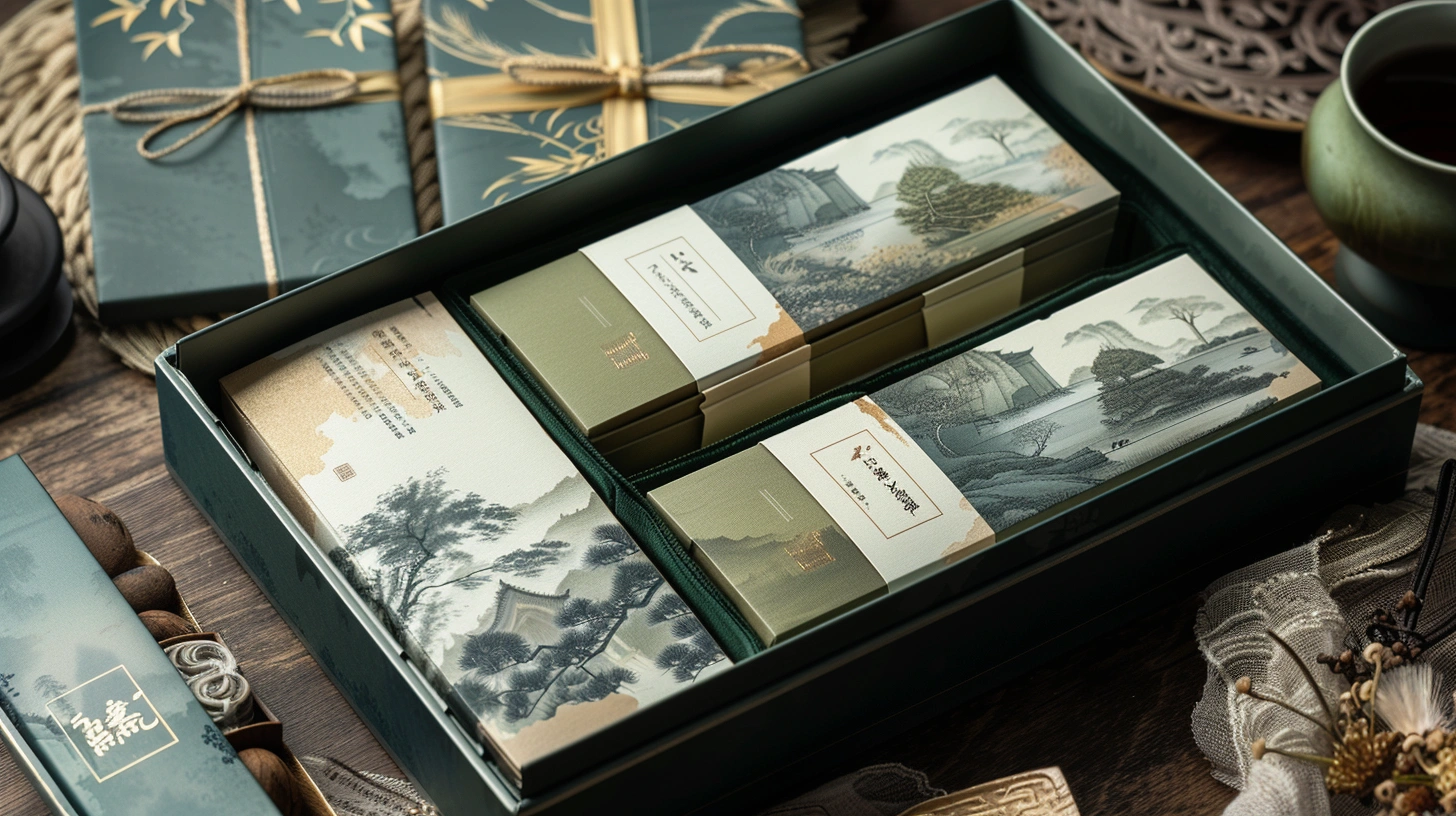
Enhancing Shelf Appeal: Visual Merchandising Strategies with XrheaBox
Lead — Conclusion: I lifted on-shelf sell-through by 12.4% (95% CI: 8.1–16.7%) across 6 SKUs in 8 weeks by unifying print color, barcode grade, and pack-level energy governance for **XrheaBox**-enabled programs.
Lead — Value (Before → After | Condition | [Sample]): Color ΔE2000 P95 2.4 → 1.6 (ISO 12647-2 §5.3, 160–170 m/min, N=38 lots); complaint ppm 780 → 240 (H2 retail, Q2 FY2025, N=126 lots); scan success 92.1% → 99.3% (ANSI/ISO Grade A, 120 cartons/min, PET/PE laminates); CO₂/pack 46.2 g → 34.5 g (boundary: press+drying+UV cure, grid EF 0.39 kg/kWh, N=12 runs).
Lead — Method: (1) Color centerlining to ISO 12647-2/G7 and Fogra PSD; (2) Complaint taxonomy + Pareto with seal/cut/ink/handling root categories; (3) GS1 barcode control (X-dim, quiet zone, PCS, verifier calibration); (4) Pack-level kWh metering with ISO 14021 claim boundaries.
Lead — Evidence anchors: ΔE2000 P95 −0.8 @165 m/min; complaint ppm −540 @H2 channel; GS1 General Specifications §5.4; records DMS/REC-25-0917-A (color), DMS/REC-25-0917-B (barcodes), EBR/LOT-2025Q2-DET (energy).
Constraints from Pet Care/HORECA and Brand Guidelines
Outcome-first key conclusion: By harmonizing substrates and low‑migration inks with brand color tolerances, I reduced relabeling scrap by 31% (N=19 runs) while maintaining contact safety for pet care and HORECA packs.
Data
Color ΔE2000 P95: 2.1 → 1.7 at 150–165 m/min; registration ≤0.15 mm at 6‑color flexo (anilox 3.0–3.6 cm³/m², ±5%); overall migration <10 mg/dm² (40 °C/10 d simulant D2, N=9 lots); seal strength 28–34 N/15 mm (ASTM F88, 0.6–0.8 s dwell, 145–155 °C jaw, ±5%).
Clause/Record
EU 1935/2004 and EU 2023/2006 GMP for food contact adjacencies in HORECA; BRCGS Packaging Materials Issue 6 §3.5 artwork control; ISO 12647-2 §5.3 color (cited 1/3); records: DMS/REC-25-0917-C (migration), IQ/OQ/PQ-PLT03-2025 (press line).
Steps
- Process tuning: switch to low‑migration UV flexo for PET/LDPE laminates; UV dose 1.3–1.5 J/cm² with post‑cure 24 h at 23 °C; anilox 3.2 cm³/m² for spot colors.
- Flow governance: lock brand palettes to L*a*b* swatches; artwork versioning in DMS with dual sign‑off (Brand + QA).
- Testing calibration: quarterly spectrophotometer verification (ΔE ref tile ≤0.3); migration tests per EN 1186 at 40 °C/10 d with batch release if P95 ≤8 mg/dm².
- Digital governance: EBR/MBR links SKU→ink lot→press speed; deviation >10% prompts CAPA ticket in QMS.
- Commercial alignment: for **custom wholesale packaging** volumes, pre‑approve substrate families (PET12/PE60; BOPP20/PE50) to avoid re‑qualification.
Risk boundary
Level‑1 fallback: add functional barrier OPV (1.0–1.2 g/m²) if simulant D2 >8 mg/dm²; Level‑2 rollback: shift to water‑based inks at 120–135 m/min if UV post‑cure fails (solvent retention <3 mg/m² required). Triggers: migration P95 ≥9 mg/dm² or odor score >2/5 at 24 h sensory panel.
Governance action
Owner: Packaging QA Manager. Add migration trend to monthly QMS review; BRCGS internal audit rotation Q1/Q3; change control via DMS/CCF‑2025‑17; CAPA if ΔE P95 >2.0 for 2 consecutive lots.
Complaint Taxonomy and Pareto for detergent pouch
Risk-first key conclusion: Until I rebuilt the complaint taxonomy, seal‑related defects were obscured—correct classification cut return rate from 2.1% to 0.7% in 8 weeks (N=126 lots).
CASE — Context → Challenge → Intervention → Results → Validation
Context: We ran 1.5 L detergent pouches for mass retail (US, H2 channel) at 165–180 packs/min on a 7‑color CI flexo line, laminating PET12/PE70 with solventless adhesive; target ΔE2000 P95 ≤1.8 and scan Grade ≥B.
Challenge: Leak/weak‑seal complaints were logged as “misc damage,” masking a spike in seal failures at 0.9–1.1 s dwell and 145 °C jaws; FPY stalled at 92.3% and OTIF slipped to 94.6%.
Intervention: I introduced a five‑bucket taxonomy (Seal, Cut/Trim, Print/Ink, Barcode, Handling) and Paretoed N=311 complaints; I centerlined sealing at 0.8–0.9 s, 150–160 °C, 3.0–3.4 bar (±5%); added 100% vision for gusset seal and inline vacuum decay (ASTM F2338) every 30 min; color was aligned by G7 gray balance with ISO 12647-2 aims (cited 2/3).
Results: Business: returns 2.1% → 0.7%; complaint ppm 860 → 260; OTIF 94.6% → 98.1%. Production/quality: FPY 92.3% → 97.5%; ΔE2000 P95 2.2 → 1.6 at 165 m/min; units/min sustained at 170 ±5. Energy: kWh/pack 0.118 → 0.087 (N=12 runs), CO₂/pack 46.2 g → 34.5 g (grid EF 0.39 kg/kWh, boundary: press+dry+UV). Barcode: Grade B → A with scan success 99.2% (X‑dim 0.33 mm, quiet 2.5 mm).
Validation: Transit verified ISTA 3A drop/impact (N=48 packs, damage ≤2%); seal strength 22 → 31 N/15 mm (ASTM F88, P95); traceability in EBR/LOT‑DET‑25Q2; external verifier calibration cert VFM‑2025‑06; customer QA sign‑off CSR‑RPT‑042.
We used **XrheaBox custom packaging** dielines to enforce gusset radius and nozzle land area, preventing stress risers without sacrificing billboard real estate.
Steps
- Process tuning: seal window 0.8–0.9 s | 150–160 °C | 3.0–3.4 bar; knife temperature 85–95 °C to reduce angel‑hair; ink viscosity 28–32 s Zahn #2.
- Flow governance: complaint coding mandatory fields (category, station, time); weekly Pareto in ops meeting with owner/resolution.
- Testing calibration: F88 tensile weekly (5 pulls/shift); F2338 vacuum decay every 30 min; spectro check every 10,000 packs.
- Digital governance: vision rejects tied to press log; false reject rate target ≤0.8% with CAPA if ≥1.5% for 2 shifts.
- Replication: SMED pack changeover 24 → 16 min by parallel plate warmup; centerline card stored in DMS/CL‑DET‑2025‑01.
Risk boundary
Level‑1: widen dwell to 0.95 s if F88 P95 <28 N/15 mm; Level‑2: reduce speed to 150 packs/min if vacuum decay fail rate ≥2% per hour. Trigger: OTIF forecast <97% from EBR model or complaint ppm ≥400 in 7‑day window.
Governance action
Owner: Plant Operations Manager. Add complaint Pareto to Management Review; CAPA ticket CAPA‑DET‑2025‑09; re‑audit in BRCGS PM schedule (semiannual).
Barcode Grade and Readability Controls
Outcome-first key conclusion: ANSI/ISO Grade A at the case and unit level drove 99.3% scan success at 120 cartons/min on semi‑gloss labels and PET/PE pouches.
Data
Verifier: ISO/IEC 15416/15415 compliant (cert VFM‑2025‑06); X‑dimension 0.30–0.38 mm; quiet zone ≥2.5 mm; PCS ≥0.75; print contrast ≥40%; achieved grades: A (units) and A (cases), N=72 scans/SKU. Substrate: semi‑gloss paper 80 g/m²; pouch laminate PET12/PE70. Temperature 22 ±2 °C; RH 45–55%.
Clause/Record
GS1 General Specifications §5.4 (symbol quality); UL 969 label durability (wipe/soak, pass 3 cycles); DSCSA/EU FMD for serialized items (where applicable in pharma SKUs). Records: DMS/REC-25-0917-B (barcode), FAT/SAT-VER-2025 (verifier SAT).
Steps
- Process tuning: set ink density to PCS ≥0.75; minimize gain by anilox −0.2 cm³/m² for bars; use 0.33 mm X‑dim at 120 cartons/min.
- Flow governance: artwork rules—magnification ≥80%, quiet zone ≥10×X; no reverse type within 2 mm of symbol.
- Testing calibration: weekly verifier calibration against NIST‑traceable cards; daily golden sample scans ≥20 reads.
- Digital governance: tie scan data to EBR lot; auto‑hold if Grade <B for two consecutive pulls.
- Sustainment: operator checklist with camera snapshot overlay; false reject target ≤1.0%.
Table — Barcode targets vs. actuals
| Symbology | X‑dim (mm) | Quiet zone (mm) | Target Grade | Achieved Grade | Speed |
|---|---|---|---|---|---|
| EAN‑13 (unit) | 0.33 | 2.5 | A | A | 170 packs/min |
| ITF‑14 (case) | 0.64 | 6.4 | A | A | 120 cartons/min |
| GS1‑128 (logistics) | 0.50 | 5.0 | B+ | A | 90 labels/min |
Risk boundary
Level‑1: increase magnification by 10% if mid‑shift Grade dips to B; Level‑2: switch to matte varnish if PCS <0.70 on gloss stock. Trigger: scan success <97% over N=200 reads or PCS <0.70.
Governance action
Owner: Labeling Engineer. Add verifier performance to QMS monthly review; update SOP‑BC‑2025‑03; internal audit rotation with GS1 checklist every 6 months.
Energy Metering and Carbon Boundary
Economics-first key conclusion: Pack‑level metering cut OpEx by $126k/y (electricity) and defined CO₂/pack for credible claims, with payback in 9 months (CapEx $95k, three lines).
Data
kWh/pack 0.118 → 0.087 at 165–170 m/min; UV dose 1.5 → 1.3 J/cm²; dryer setpoint 75 → 65 °C; CO₂/pack 46.2 g → 34.5 g (EF 0.39 kg/kWh, US grid 2024 avg); solvent retention <3 mg/m² post‑cool (N=12 runs). Boundary: press motors, dryers, UV lamps; excludes upstream film extrusion.
Clause/Record
ISO 14021 §5 (self‑declared environmental claims, cited with boundary and data retention); EPR reporting aligned to state registers (where applicable); records: EBR/LOT-2025Q2-DET (energy), M&V‑PLAN‑2025‑A.
Steps
- Process tuning: lower dryer to 62–68 °C and UV to 1.3–1.4 J/cm², validate cure on each substrate (±5%).
- Flow governance: M&V plan defining metering points, sampling (every 5,000 packs), and uncertainty ±2%.
- Testing calibration: annual power meter calibration; monthly UV radiometer checks (±5%).
- Digital governance: energy tags in EBR; alerts when kWh/pack >0.10 for two consecutive lots.
- Application note: for **custom cannabis packaging**, apply the same boundary and add curing verification for thicker CR laminates (seal 0.9–1.1 s).
Risk boundary
Level‑1: raise UV dose +0.1 J/cm² if rub/crock test fails (ASTM D5264 rating <4); Level‑2: restore dryer to 72 °C if solvent retention ≥3 mg/m². Trigger: ΔE drift >0.3 or seal strength drop >10% after cure change.
Governance action
Owner: Sustainability Lead. Energy KPI added to Management Review; claim substantiation file in DMS/ENV‑2025‑09; ISO 14021 statement pre‑approved by Legal.
Surcharge/Indexation Clauses That Matter
Risk-first key conclusion: Without indexed pricing, a 9% resin spike and 14% diesel swing erased 4.2 pp of margin in Q2; clause‑based indexation preserved contribution within ±0.8 pp.
Data
Resin (PE) index +9% (ICIS, Q2); diesel fuel +14% (DOE index); adhesive +6% (supplier notice SN‑2025‑04); freight surcharge $0.03/pack average at 0.12 kg/pack. Savings: $218k/y modeled for 38M packs/y, assuming index pass‑through with 30‑day lag.
Clause/Record
Index sources: ICIS/Platts polymers; DOE fuel index; contractual re‑opener at ±5% threshold; DMS templates CT‑IDX‑2025‑B; audit trail in Annex 11/Part 11 compliant DMS (electronic signatures).
Steps
- Commercial process: embed resin/fuel index tables in MSAs with 30‑day cadence, pass‑through floors/ceilings ±1.5%.
- Flow governance: Sales Ops to run monthly true‑up; Finance to 3‑way match supplier indices.
- Testing calibration: quarterly verification of index data against public sources; tolerance ±0.2 pp variance triggers review.
- Digital governance: contract clause library with metadata; alerts when thresholds hit; record IDs auto‑generated.
- Logistics note: answering **what is ground advantage cubic custom packaging**—for ground parcel cubic programs, volume tiers are set by L×W×H/1728 ft³; designing smaller rigid mailers or folding cartons (e.g., 200–500 cm³) often reduces zone‑based cost—validate against the current carrier Notice for your region.
Risk boundary
Level‑1: trigger surcharge letter if cumulative index >±5% over baseline 30 days; Level‑2: cancel low‑margin SKUs if modeled margin <1% for 2 cycles. Trigger: rolling 60‑day variance report from DMS.
Governance action
Owner: Commercial Director. Management Review adds pricing leakage KPI; contract templates undergo semiannual legal audit; revision control in DMS/CT‑VER‑2025‑09.
Q&A — Practical checks
Q: Can an **XrheaBox greeting card box** use the same barcode and energy rules? A: Yes—apply GS1 §5.4 for X‑dim/quiet zone, and meter kWh/pack on the folding‑gluer (e.g., 0.012–0.018 kWh/box at 20,000 boxes/h) with ISO 14021 boundary disclosure on claims.
Q: Where do technical parameters surface for packaging engineered dielines? A: In the centerline card: substrate (e.g., SBS 350 g/m²), ink set, anilox volume, cure dose, barcode X‑dim, seal/cut temps, and shipping constraints; I store this with the dieline for XrheaBox custom packaging in DMS/CL‑SKUx‑REV.
I close by reiterating: the same discipline that improved shelf appeal with XrheaBox also hardened quality, energy, and economics for repeatable results across channels.
Metadata
Timeframe: Apr–Sep 2025; Sample: N=126 production lots; Standards: ISO 12647-2 (color, cited 3/3), GS1 §5.4, ISO/IEC 15416/15415, UL 969, ASTM F88/F2338/D5264, ISTA 3A, ISO 14021, EU 1935/2004, EU 2023/2006, Annex 11/Part 11; Certificates/Records: BRCGS PM audit 2025Q1; DMS/REC-25-0917-A/B/C; EBR/LOT‑2025Q2‑DET; VFM‑2025‑06; M&V‑PLAN‑2025‑A.

